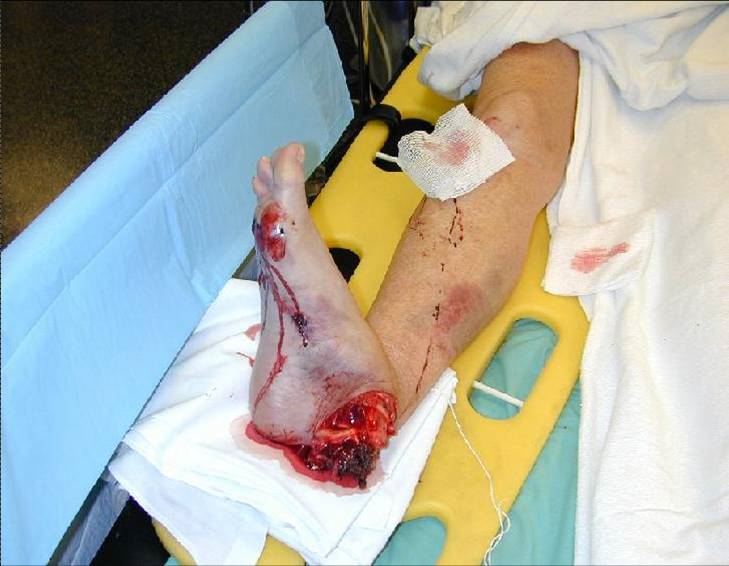By Staff Reporters
***
***
MD versus DO: https://medicalexecutivepost.com/2023/06/17/the-md-versus-do-degree/
***
Almost every medical profession has its fair share of grossness and unbelievable moments. But, when it comes to podiatrists, you could argue that they have it extra bad for the simple reason that they specialize in feet. Most people would probably agree feet can be one of the human body’s most disgusting parts. People often neglect or ignore their feet, which can suffer badly from some common diseases and become a hotbed for unsanitary practices.
But, is a podiatrist really a physician?
You bet! Now, while the American Podiatric Medical Association [APMA] defines Doctor of Podiatric Medicine, or podiatrist, as “a physician and surgeon of the foot and ankle,” the The Social Security Administration’s Program Operations Manual System (POMS) legally defines a podiatrist as the following:
A podiatrist is a “physician” with respect to those functions which the podiatrist is legally authorized to perform in the State in which the individual performs them. Furthermore, the POMS states: A podiatrist is considered a “physician” for any of the following purposes: 1. for making the required physician certification and re-certifications of the medical necessity for Part A and Part B provider services. 2. for the purpose of establishing and periodically reviewing a home health plan of treatment; and for purposes of constituting a member of a Utilization Review (UR) committee but only if: a. the performance of these functions is consistent with the policy of the institution or agency with respect to which the podiatrist performs them; b. the podiatrist is legally authorized by the State to perform such functions; and c. at least two of the physicians on the Utilization Review committee are doctors of medicine or osteopathy.
In the United States, podiatrists are educated and licensed as Doctors of Podiatric Medicine (DPM). After a 4-year bachelor’s degree, the preparatory education of most podiatric physicians — similar to the paths of traditional physicians (MD or DO) — includes four years of undergraduate work, followed by four years in an accredited podiatric medical school, followed by a three or four year hospital-based residency program.
Optional one to two-year fellowships in foot and ankle reconstruction, surgical limb salvage, sports medicine, plastic surgery, pediatric foot and ankle surgery, and wound care is also available. Podiatric medical residencies and/ or fellowships are accredited by the Council on Podiatric Medical Education (CPME). The overall scope of podiatric practice varies from state to state with a common focus on foot and ankle surgery. Podiatrists work in hospitals, private practices and clinics, university medical centers and/or specialized practices.
Generally podiatrists can:
- Perform physical examinations and study medical histories
- Order and interpret X-rays and also other imaging studies like MRIs, and CAT scans.
- Giving podiatric advice, second opinions and diagnosis
- Administer drugs, narcotics, anesthetics and also sedation
- Perform surgery related to the foot, ankle and legs
- Perform plastic, macro and micro-surgeries and reconstructive bone surgeries
- Prescribe medications such as narcotic pain killers, sleep aides and antibiotics
- Perform certain physical and occupational therapies
- Be on hospital staffs and take Emergency Room hospital call
- Be on health insurance plans for covered physicians and medical providers
- Prescribe, order, and fit prosthetics, casts, insoles, and orthotic devices
- Attest to physical disability, write a doctor’s medical, treatment or absentee note, etc
In fact, the American Board of Podiatric Medicine [ABPM] offers a comprehensive qualification and certification process in podiatric medicine and orthopedics. Sub-specialties of podiatry include:
- General podiatry
- Podiatric reconstructive surgery
- Podiatric medicine
- Podiatric orthopedics
- Podiatric sports medicine
- Podiatric high-risk wound care
- Podiatric rheumatology
- Podiatric oncology
- Podiatric vascular medicine
- Podiatric dermatology
- Podiatric radiology
- Podiatric gerontology
- Podiatric diabetology (limb salvage)
- Podiatric pediatrics
- Forensic podiatry,
- etc.
MD/DO: https://medicalexecutivepost.com/2023/06/17/the-md-versus-do-degree/
COMMENTS APPRECIATED
Thank You
***
***
Filed under: "Doctors Only", Career Development, Drugs and Pharma, Ethics, Experts Invited | Tagged: allopathic, allopathic physician, APMA, DO, doctor podiatric surgery, DPM, DPMs, MD, md do, md do dpm, osteopath, osteopathic physicians, podiatric mecicine, podiatric physicians, podiatric surgery | Leave a comment »


















